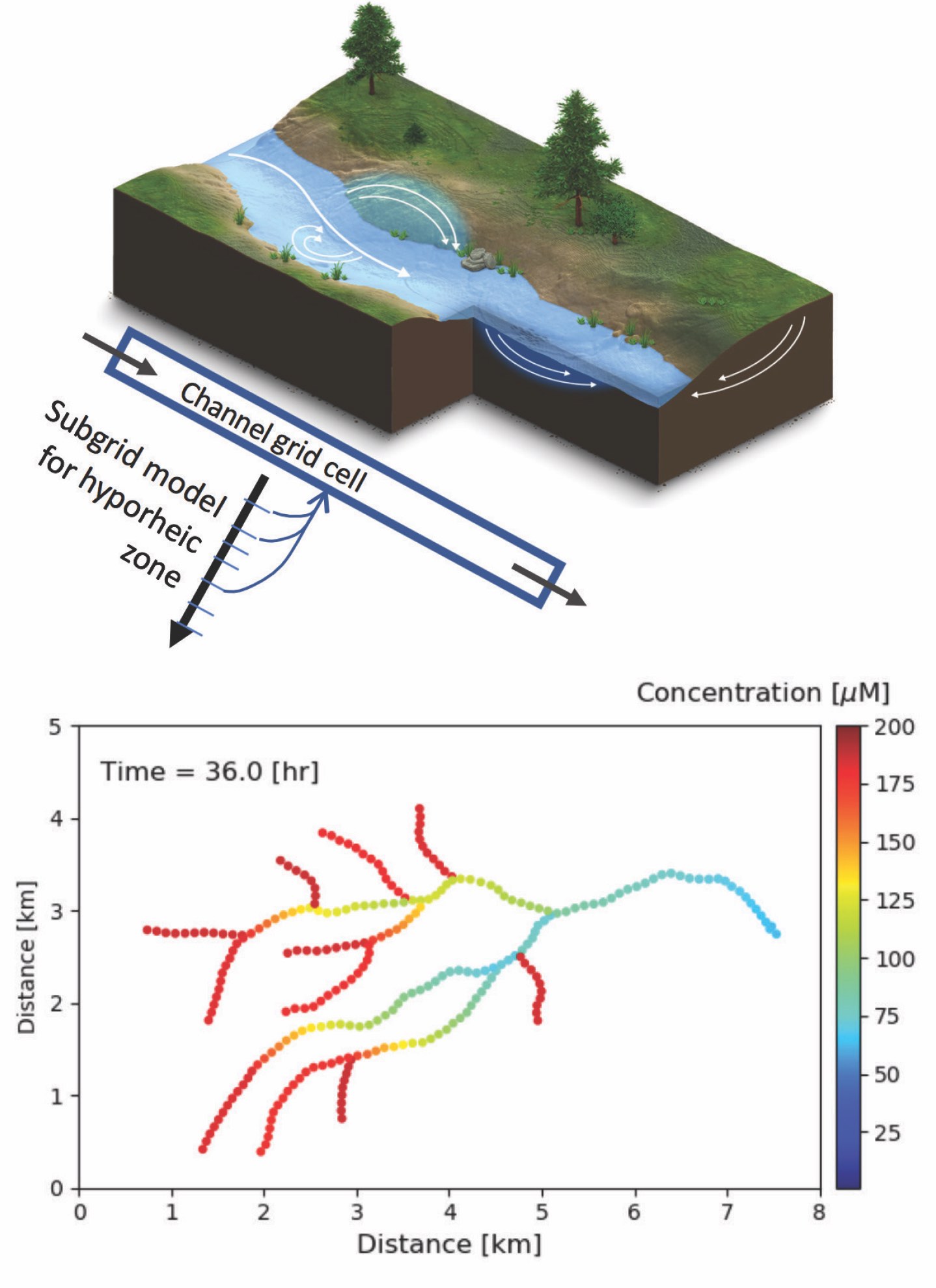Representing the Effects of Biogeochemical Hotspots in Basin-Scale Models
New multiscale simulation approach enables more detailed representation of biogeochemical processing of carbon, nutrients, and metals in basin-scale models.
September 19, 2018

Depiction of hyporheic exchange in the stream/river corridor with schematic of the new multiscale model for reactive transport (top). Nitrate concentration from a watershed-scale simulation of microbially driven denitrification (bottom).
[Courtesy Oak Ridge National Laboratory.]
The Science
Highly localized biogeochemical hotspots are widely recognized to play an outsized role in controlling the transformation of nutrients and contaminants in streams and rivers but are difficult to represent in field-scale models. In collaboration with the IDEAS-Watersheds project, a team of researchers developed a new multiscale representation of transport and transformation in stream corridors. The new model, CHAnnel Network with Lagrangian Subgrid (CHANLS), associates a subgrid model for hyporheic zone reactive transport with each channel grid cell. The subgrid models are written in Lagrangian form with hyporheic age replacing travel distance, a novel application of stochastic subsurface hydrology theory that makes it possible to efficiently represent an ensemble of flowpaths and account for flowpath diversity through the biogeochemically active hyporheic zone. Researchers implemented the CHANLS conceptualization in the open-source community software Advanced Terrestrial Simulator (ATS) using the Alquimia application programming interface to access biogeochemical reaction modeling capability in the PFLOTRAN simulator. Methods for estimating key model parameters related to hyporheic exchange rates and hyporheic residence times from stream tracer tests were developed and tested.
The Impact
It is now possible, for the first time, to incorporate detailed fine-scale understanding of nutrient, carbon and metal biogeochemical processes in the hyporheic zone at the societally relevant scales needed to understand effects on downstream water quality.
Summary
In contrast to traditional methods for modeling reactive transport in streams and rivers, the CHANLS conceptualization allows more detailed biogeochemical process understanding to be represented at the appropriate fine spatial scale of those processes while remaining tractable at field scales. The implementation in ATS provides a platform for next generation water quality modeling tools.
References
Painter, S. L.. "Multiscale Framework for Modeling Multicomponent Reactive Transport in Stream Corridors." Water Resources Research 54 (10), 7216–30 (2018). https://doi.org/10.1029/2018WR022831.
Painter, S. L.. "On the Representation of Hyporheic Exchange in Models for Reactive Transport in Stream and River Corridors." Frontiers in Water 2 595538 (2021). https://doi.org/10.3389/frwa.2020.595538.